Have you ever wondered whether it’s a good or bad idea to have a safety on your handgun?
Many people think it’s more unsafe to have a handgun without a manual, external safety. Like a Glock 19, Sig 320, etc
Is that really true? Or is it possible that having a manual safety is not needed on a concealed carry handgun?
Why Have A Safety On Your Handgun?
There is probably just one reason that you want a safety on your handgun, and that’s to be more “safe”.
In other words, you only want the gun to go bang when you intend to shoot it. You don’t want to “accidentally” pull the trigger or make it go bang when you don’t want it to.
In short, you want to avoid negligent discharges and putting holes in things that should not have holes in them.
So is a safety really necessary to do that?
Well, 99% of the time, your concealed carry handgun should be in one place and one place only. In a properly fitted holster that covers the trigger and trigger guard completely, so that it’s impossible for the trigger to be pulled “accidentally”.
The fact is, if the trigger is incapable of moving in your holster–then a safety is redundant because the gun can’t fire.
On the other hand, consider a home defense type situation. Or more accurately, you hear a bump in the night and you go to check it out, gun in hand. Your gun is loaded and you’re clearing your house with it. A safety might keep you from “accidentally” shooting a loved one because you have to disengage it before you can shoot.
That’s also the downside.
Why NOT To Have a Safety On Your Handgun
The downside to a safety on your handgun is that you have to disengage it to shoot your gun.
Think about the reason you carry a handgun instead of a rifle. Because you have to. If we had our choice, the best personal protection would be an AR-15 slung over the shoulder. It’s more powerful, holds more ammo, and is easier to shoot.
The rifle can be thought of as a great offensive weapon. If you know you’re going to get into a gun fight you bring a rifle. Preferably, you also call up all your friends with rifles and you tell them to go with you to the fight 🙂
But we have to carry handguns because they’re smaller, more concealable, we can take them anywhere and while not as powerful, they generally help stop bad people from doing bad things if you shoot them with it.
Handguns are also primarily defensive. That means 90% of the time you should only take your handgun out of the holster if you need to shoot somebody or something RIGHT NOW.
And a safety can get in the way of that.
Is A Safety Necessary?
Consider this video by Reid Henrichs on whether a manual safety on a pistol is a good idea.
Historically, he makes some great points …
He also makes some great points about how the 4 safety rules will keep you out of trouble.
He’s right of course, but the problem is we’re all human.
Different Guns Have Different Levels of “Built In” Safety
Manual safeties were basically invented for single action guns like the 1911. Because of the super light trigger pull of a single action pistol, the safety on 1911’s was necessary. They actually put two on there, the grip safety and slide safety (though I’ve heard that back in the day, the WWII era .mil guys used to rubber band the grip safeties down because they didn’t always engage properly and it was faster to get the gun into action that way.)
Of course, before that you had double action revolvers. The long trigger pull of a double-action revolver (because it has to both cock and release the hammer) makes them safe to carry without a safety because the length of the trigger pull generally makes a negligent discharge harder to achieve.
After that we have many double action/single action semi-auto handguns like the Beretta 92 series, the Sig P220 series, the HK USP series, etc. These all function similar to a revolver on their first shot — the first trigger pull both cocks and releases the hammer — and then the subsequent shots are all single-action.
This is actually a pretty ideal solution to the whole safety thing because even if the pistol has a manual safety (like the Beretta 92FS) Ernest Langdon recommends decocking the pistol, but leaving the safety off to carry it. That way the long trigger pull keeps you safer but there is still no manual safety to fumble with when you need to shoot something right now.
Finally, that brings us to the modern striker-fired semi-auto pistol which — love it or hate it — is represented by the Glock series of pistols. These are all striker fired and include the Glock, the M&P series, and the Sig P320 series, etc. These are arguably the most popular pistols in the world right now, as evidenced by over 65% of U.S. law enforcement using them, most civilians using them, and the military steadily switching over to them.
Now, for getting the gun into the fight fast, nothing beats the striker fired setup. No manual safety, no different trigger pull lengths. Just grab, aim and fire. Simple.
That also makes it more “dangerous”. Not really because there’s no manual safety, but again, because the trigger pull length is the same for the first shot as it is for all shots.
That means, in the aforementioned “house clearing” scenario — if you’re not perfectly following all the safety rules and you get a little too jumpy — you could easily have a negligent discharge.
Ernest Langdon likes to point out that keeping a Beretta decocked and off safety is NOT like a Glock — it’s like a double-action revolver. (Because carrying a Beretta decocked is like carrying a double-action revolver for the first shot because the long trigger pull needed to both cock and release the hammer.) He says that carrying a Glock is basically like carrying a revolver with the hammer already 2/3rd’s of the way into the firing action.
I would never disagree with Ernie because of course he’s right. He’s forgotten more about guns than I’ll ever know. And he’s older, which makes him much, much wiser than me 🙂
That said …
Given that the Glock style pistols are the most popular pistols in the world — that’s millions of handguns out there using a striker fired setup with no manual safety — and while you do hear about a lot of negligent shootings, there’s not as many “accidents” as you would think.
Again, the safety rules work, but everyone is human. A longer first trigger pull does add a “layer” of safety.
The Importance Of The 4 Safety Rules (And 2 In Particular)
Like Reid mentioned in the video, your primary safety is your muzzle control. As long as your muzzle is not pointed at anything you don’t want to destroy, then even if you have a negligent discharge — nothing will get hurt. (Rule #2)
The second most important safety is your trigger finger discipline. In short, keep your finger off the trigger unless your sights are on target and you’ve made the decision to shoot. (Rule #3)
And if you follow all 4 rules, it’s almost impossible to have an “accidental” shooting handling a handgun (or any other gun).
The problem is, yes, we are all human and we all make mistakes. Nobody is perfect, and we’re all likely to break one of these rules at some point in time and that is — indeed — how people get hurt.
The TRUTH Is, The “Safer” The Gun, The Complicated It Is To Use
I know that I’m going to catch some heat for this, but it’s true.
The more mechanical safeties — or even procedures — needed to be utilized to fire the handgun makes it more complicated to use.
You see, when I first got serious about arming myself and training I bought a handgun. The one I always craved, the Sig P225 9mm. It fit like a glove, was slim for its time (the 80’s) and was double/single action.
I loved the all-steel Sigs. Then I eventually bought a Sig P229R for my wife because I loved Sigs so much and it’s a beautiful gun.
Eventually, as I trained more, I switched to a Glock 19.
The first time my wife took a training class, while she started with the amazing Sig P229R — she switched quickly to a borrowed Glock 19 Gen 2 because, quite simply, it’s much, much easier to use.
(Of particular concern is the fact that in 99% of the self-shootings in training classes, it’s when the gun is being re-holstered. To safely re-holster the Sig or other DA/SA guns, you absolutely MUST decock it before re-holstering slowly. That sounds simple but under a little bit of stress, it can easily be forgotten if you’re just starting out training.)
Yes, with just a little dedicated training a double action/single action gun is no more complicated to use than a striker-fired gun.
But let’s be honest here …
Most gun owners do not train.
Most gun owners are not that disciplined.
Most gun owners get flustered just figuring out how to administratively load, cock and get a gun ready for action. Or unload, clear it, etc.
And again, if they need a gun for self-defense they need it right now and they need to pull it out and start shooting without having to put any more thought into how to work it or what condition it’s in or whether it’s decocked or not, etc
The more simple the better.
Personally, I carry a Glock 19 now.
I’m not worried about not having a manual safety. I’m also very, very, religiously careful with the safety rules. ESPECIALLY when I holster the gun or do ANY administrative handling of the gun (aka not shooting it). I act like a total beginner and take it slow, and watch my hands like I’m disabling a nuclear weapon. It’s just worth it to be careful.
What Do You Think? Do You Need A Safety On Your Handgun?
I’m interested to hear your thoughts.
Do you think a manual safety is necessary?
Do you need or want one on your carry gun?


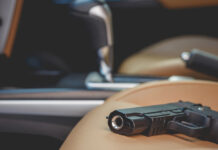


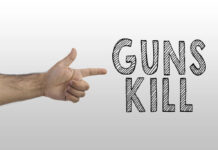

![Are Compensators Worth It? [Video]](https://preparedgunowners.com/wp-content/uploads/2025/07/Depositphotos_815431992_S-218x150.jpg)



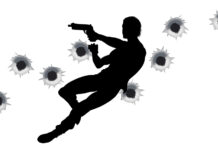

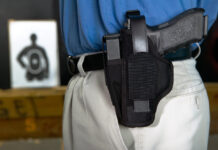
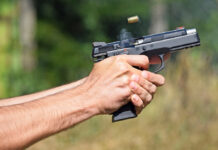
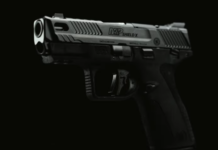
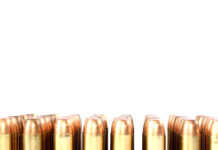
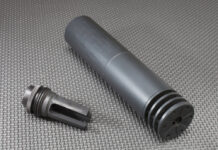
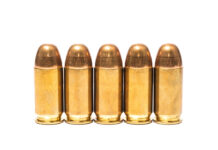

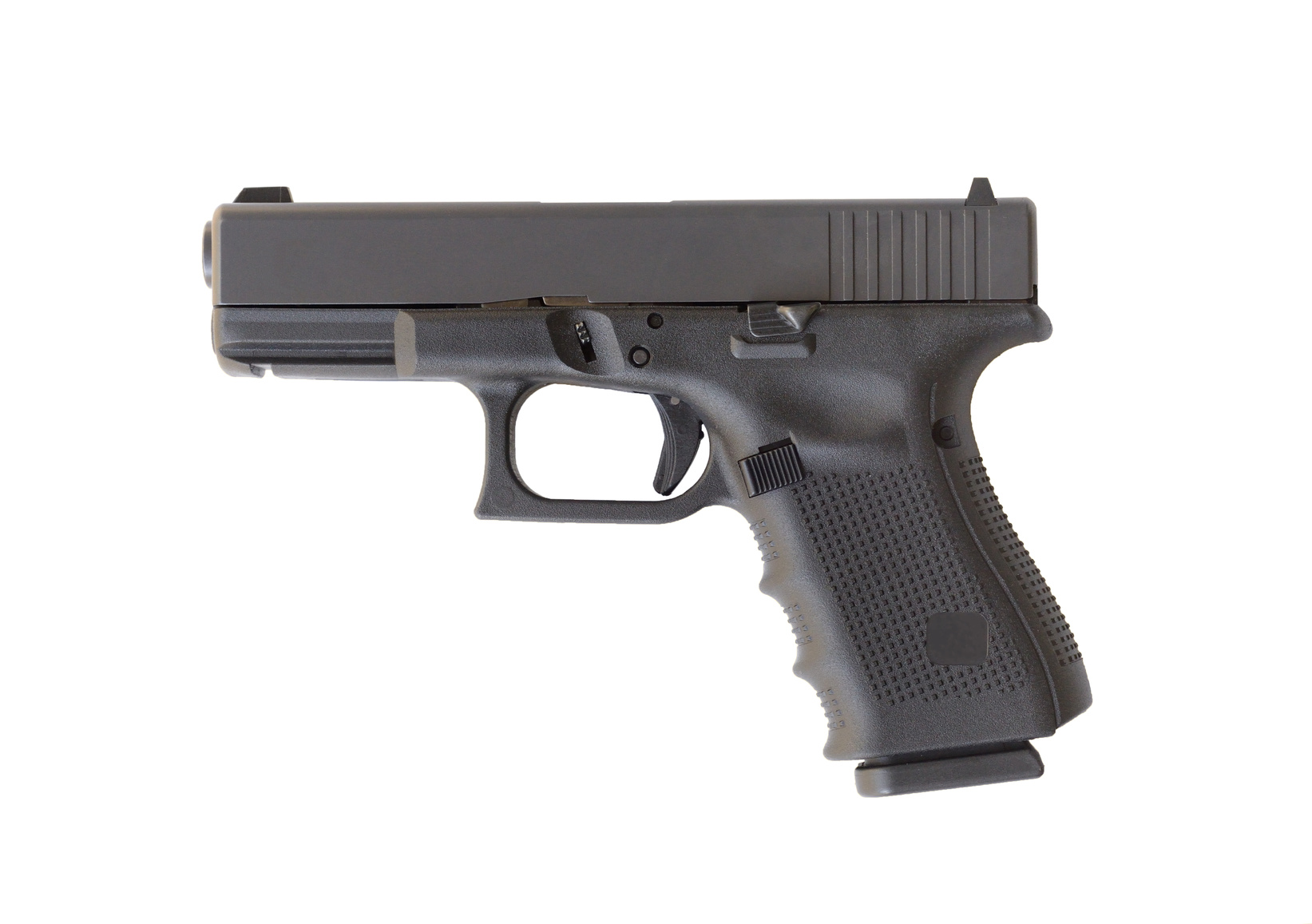
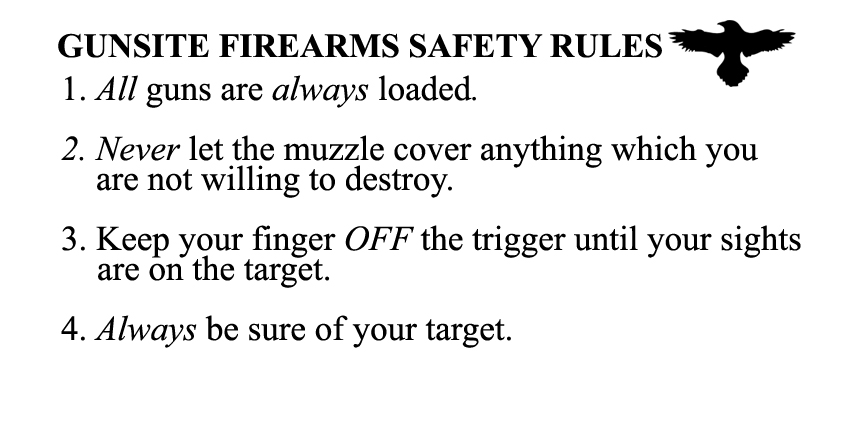


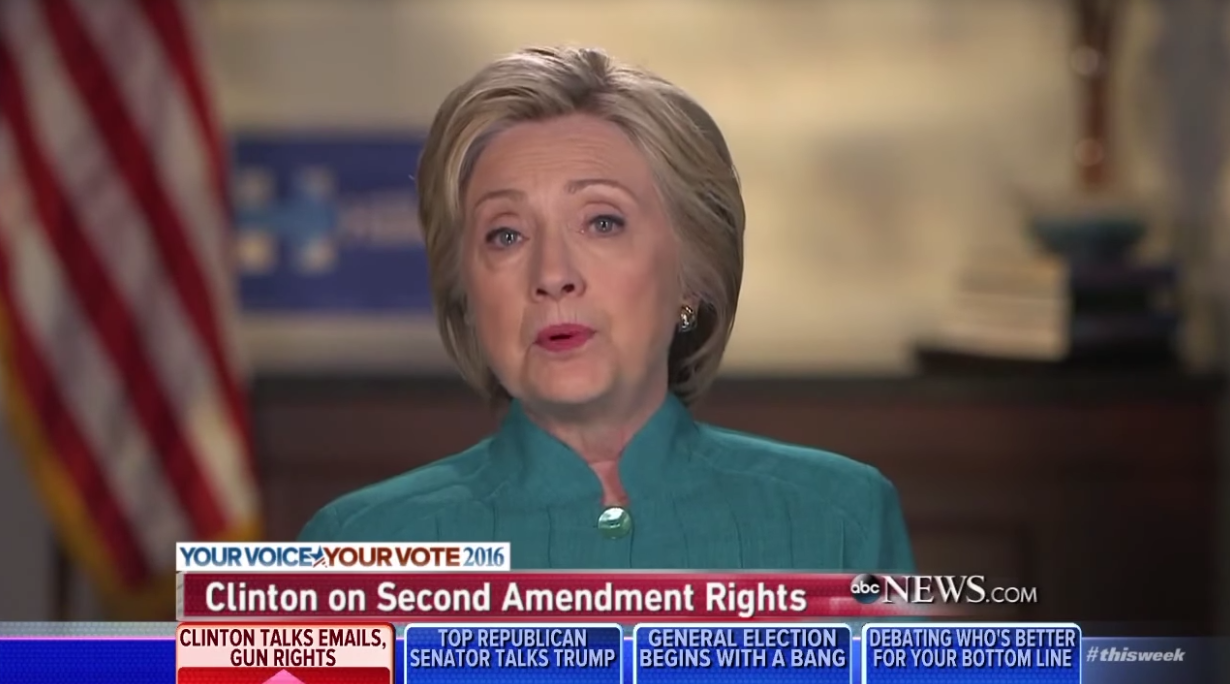







![Optic Ready vs Milled slides? [Video]](https://preparedgunowners.com/wp-content/uploads/2024/02/image-3-100x70.png)
![[Checklist] What Gear You Need To Take Pistol, Rifle & Shotgun Training Courses [Video]](https://preparedgunowners.com/wp-content/uploads/2023/07/Depositphotos_275087632_L-100x70.jpg)
![What is in Carter’s 2023 EDC? [Video]](https://preparedgunowners.com/wp-content/uploads/2023/07/Depositphotos_146856137_L-100x70.jpg)



Very good, informative, confirms what I already thought. Keep up the good work.
http://abcnews.go.com/US/man-accidentally-shoots-wife-church-discussing-weapons-churches/story?id=51221000
@Minnie, what does what have to do with this story on different types of triggers? Last week a toddler ran over her mom and infant sister outside of a yoga class. Ban Yoga, cars? The country has 350,000,000 people all kinds of things happen. A single additive put into sugar is estimated to be killing 30 times as many people per year as die from accidental gunshot.
http://www.latimes.com/science/sciencenow/la-sci-sn-sugar-c-diff-20180103-story.html
both gun homicide and accidental death by firearm have been falling for 25 years as carry increases. In fact they are both down 65% .
Are there any/many long guns that don’t have a manual safety? I assume the military trains to employ the use of the safety with the M4, yet a manual safety makes a handgun too complicated to get into action? I feel like I’m missing something.
Most people would agree that the environment for a concealed carry pistol and a combat rifle are vastly different. With concealed carry, you’re most likely going to be drawing a firearm and trying to shoot a person 15 feet away from you before they notice you and shoot back. Split seconds count here. And when you lose a split second fumbling with a safety, or simply forgetting to disengage a safety, you get shot and killed. If you’re in a combat situation with a rifle, you’re probably not trying to quick draw on someone 15 feet away. You’ll likely already have your rifle in your hands with your thumb on the safety, ready to go. On top of that, you’re comparing military with rifles to civilians with a hand gun. Obviously military and police are going to have more training in high stress combat situations than a civilian who practices at the range will. So yes, you are missing something.
I agree with the OP. I am retired military (38 years, combat engineer, special electronics, academic instructor, safety manager, E-8, deployed many times) and an NRA certified instructor and RSO for over 25 years, a state certified concealed carry instructor 23 years, competitive shooter since 1976 and the last guy in my unit that was drafted. The military is trained, continuously, in target acquisition, target ID, and with our safeties ON, but we are trained… If we are in a hot zone, and in close proximity to engaging hostiles, we do take safeties off, or switch back and forth as the situation requires. The most devastating thing would be to injure a comrade with friendly fire (AD). It is a high stress endeavor we take seriously. If we have to click the safety off, it is second nature, and if we have to do it 1,000 times a day, it is what it is. That said, when teaching students in civilian life, as in the U.S. military, the KISS principle is paramount. The reason there is a safety on M9s, is because the DoD specs the RFPs that way. Simplest is always the safest and easiest to train. We also don’t approach hostile encounters the same way civilians do. You have to use “reasonable and necessary force”, TPs use all the force we can, NOW, when threatened… threat eliminated. Done! Big difference. Revolvers have no safety, because it isn’t needed. Striker pistols are inherently safe, like a revolver, just point and click! Carrying anything else is asking for trouble in a litigious society. BTW I love my 1911A1, and quit carrying it for that very reason. My EDC is a G19, high performance ammo and 2 spare mags. My flower shirt and shorts gun is a Tomcat loaded with Silver Tips. Be safe and practice A LOT.
The best safety is the person carrying the firearm.
I train with my pistols as much as I can. I treat them like I do with electricity. With great respect.
good video , think he left out one important thing. in the old six shooter unless you were going into a gun fight you carried only 5 rounds leaving the chamber under the hammer empty. now there is an internal safety that bocks the hammer until the trigger is pulled. it is also the same with the newer semi’s they have internal safeties that bloc the stricker just as the 1911 had a grip safety. if the heat of the moment fine motor skills are the first to go. the best safety is the one between your ears. the internal ones are more then enough, and all you have to do is pull the trigger. if your fingure is out of the trigger guard it is safe. i have a friend i am trying to talk out of carrying with camber empty which is even more crazy. the round could fail to chamber especially if you follow the slide forward with your hand. even if you do not nothing is perfect and it might not chamber. if you do not need your gun leave the damn thing in the holster until cleaning or practice.
In My Thoughts If There Isn’t A Manuel Safety On A Hand Gun Then I Would NOT HAVE A ROUND IN THE BARREL?CHAMBER In The Thought Of Knowing This I Am Always Ready To Work The Slide In The Event Of
NEED ( I Know The Manuel Safety IS QUICKER BUt Have The Thought In Mind To Work The Slide ) & I Have Both Types Of Hand Guns & Thank you For Asking & Have A God Bless Day
The best safety is between one’s ears.
I believe that currently there is a lawsuit by a LEO over Glock NOT having an external safety. Are you aware of that case?
Yeah there have most likely been multiple ones. IT’s not over the safety usually, it’s usually when a LEO kills himself they try suing. Most LEO and the FBI and other fed agencies keep using them though …
Personally, I’d rather have a safety than not have one on my weapon. Whether, and how, I choose to use it, or not use it, provides me with options. I happen to prefer to have options, as conditions and situations can, and do, change. I believe it to be my responsibility to have as many gun safety options
as possible, and having a safety on my weapon is, well, more safe, in my opinion.
Good video , all good information. Safety with a weapon or any other tool resides in the area between a persons ears. Stay awake and alert safety will follow.
Weird timing. Just published a novel, Urban Limit (pen name, Steve Zell), about a family coping with terrorism in the mountains of Oregon. In it – one of the characters is killed because he forgets to flip off the safety on his pistol. Oddly enough, I just finished recording that part of the audio version, yesterday!
Cool! Would love to read it 🙂
Although I do not have the finances to fire my handgun more than once month I do train at home with an empty shell. Although there are blanks available I prefer the empty. With an empty I can visibly check the shell to be sure I do not put a loaded bullet in the chamber. I practice drawing and holstering my weapon as well as improving my site alignment picture. So far I have not shot anything I do not want to shoot.
Good job practicing with a safe and unloaded gun!
When I first started carrying I either carried a S&W 637 5 shot revolver or a S&W99 compact. Neither have external safeties but the SW99 striker fire does have a button on top of the slide that decocks the firing pin allowing for a longer trigger pull on the first shot. But even if it didn’t I would still not want an external safety. An external safety is one more step you would have to take in a possible life and death situation. Practice the 4 safety steps listed above and train yourself not to touch the trigger until you are ready to fire. Keep it simple and you will have a much better chance of saving yourself.
I had no idea that S&W even existed — I almost mentioned the Canik in the article as an alternative striker fired pistol that acted like a DA/SA but had no idea S&W had one too!
Very good refresh lesson. Always good to get a new review of what we have learned over the years. I would love to see you do a column on decocking a M&P. I use a M&P SP Guide and I’m not sure how to decock it. Decocking for me is dropping the mag and racking the slide to empty the gun, the problem there is now the gun is empty and if you rack the slide again to charge the breech, it is now back in battery. Anyway thanks for a good column on safeties and CC.
What is an M&P SP Guide?
Thanks for the info. but i prefer my gun with a safety , that is why i don’t carry my Glock . I do have a long trigger pull which i am not to happy with but it is a safety to me . I am scared that i would discharge my gun to soon if i carry a gun with no safety . I just pray that if i have to use it, an i pray i don’t , that i will remember to take the safety off . I don’t know how i would act under pressure an so i would prefer to have , as i feel , a little safer with a safety on my gun . i have practiced many times with it but i don’t know how i would act under stress.
You don’t need a safety on a gun if you store it right
I agree completely. I see no need for an external safety on a modern handgun, and see more problems caused by trying to disengage the safety under high stress.
I agree with Keith R. An extra safety may very well undo you in an emergency.
I would prefer a safety on my pistol! I was dismayed to learn that on all the newer pistols there was no safety!! Perhaps the de-cocking lever can be used as a safety, but unlikely one could get it off in a panic!! It is really hard to raise it back up, and in a panic a fine motor skill one wouldn’t have.
If they going to take it off pistols, why not rifles too? make a really dangerous situation!
I’ve carried my G21 in private life since 2001 with no problems. Carried a G17 on one contract in Iraq and again . . . no discharges except when I put my finger on the trigger and pressed.
I have one carry pistol that does not have a mechanical safety and one that does. I like them both for differing projected situations. That said, the cool thing is this: I don’t see that either option is wrong. Whatever each individual is most comfortable carrying is the best answer.
1. ALWAYS follow the four basic rules of gun safety.
2. Practice regularly and safely.
3. Do everything possible to avoid a violent/dangerous situation.
4. Pray every day: “Dear God, please don’t let me get into a situation where I need to use deadly force to protect myself or someone else. However, God, if I do, please give me the strength and wisdom to do what needs to be done.”
What happens if your gun is snatched and the snatcher tries to shoot you with your own gun. Check Massad Ayoob’s studies on this type of situation. Many lives (mostly law enforcement, I believe) have been saved because someone (for whatever reason) got their gun taken away from them, but when the person who took it tried to shoot them with it, he or she didn’t know how to deactivate the safety. And no LEOs have died because of their gun being carried on-safe.
I totally agree with every point in your video. Nicely done!
My EDC is a Ruger LCP and/or a Ruger SR9C. Of course the LCP is double action only with no manual safety carried in a pocket holster. It’s always ready and very safe.
I have created a “procedure” that I follow religiously when carrying my SR9C. I carry IWB strong side. Of course, the SR9C is striker fired. If my SR9C is not in a holster, the external safety is ON. After mounting my holster to my belt, the pistol is holstered, with the safety engaged. Immediately after holstering, the manual safety is disengaged, making the pistol immediately ready to fire if the need arises. Before removing my SR9C from the holster for any administrative purpose, the manual safety is reengaged before separating gun from holster. That way if the trigger is exposed, the safety is on; if the trigger is covered the safety is off. Both conditions are equally safe. It works for me.
keep your finger off the trigger! K.I.S.S.!!
Lonewolf, Carrying without a round in the chamber is asking for trouble! If you get into a confrontation face to face and you have use one hand to hold off the bad guy, you need two hands to load a round into the chamber unless you know how to to do it with one hand. If you do I would appreciate knowing. Speed is essential to stay alive.
I always tell my students the most important feature on ANY gun you will ever hold is YOUR FINGER. If you keep a safe trigger finger position (along the frame of the gun), the muzzle never points anywhere your finger isn’t. So keep it simple, focus on your finger.
Mechanical parts can fail and we should never let our gun handling get sloppy because we’re depending on a mechanical safety to keep us safe. Also, there’s no denying truth….having an extra thing to do before being able to shoot takes more time and can be forgotten in the ‘heat of the moment’, especially with newer, less practiced shooters like you mention. I agree 100% that 99% of the time, your carry gun should be in a quality holster that covers the trigger and trigger guard. In that condition, it is impossible to have an ‘accidental’ discharge. If you ever need it out to protect yourself or someone else, with no external safety, all you have to do is complete your draw stroke (which you should be practicing often and assuming you’ve prepared properly and have a round in the chamber) and pull the trigger. It doesn’t get much simpler than that.
Bullshit!!!!!!!!!!!!!!!!!!!!!!!
I have a USP, it is not my regular carry gun, but I have spent innumerable hours practicing my draw. We all know that the USP’s safety is the size of a surfboard and very easy to manipulate! I have found that it is a natural part of my draw for the thumb to go automatically to the safety, it is just where my thumb naturally falls as I grip the gun. As the gun clears the holster, and meets up with the weak hand, it is an automatic part of getting my grip that the thumb strokes the safety down. It all comes very naturally. This would be my regular carry gun except for its bulk. I do carry it in the winter when I am wearing something big enough to cover it!
sounds like a proper 1911 draw!
I will never forgot a lesson I learned about safetys when I was growing up in Pennsylvania. I was hunting squirrel when I flushed a grouse, I was positive it was just a grouse because I had had the same experiance a couple of dozen times. Grouse was in season and I tried to push the safety off on my 20 guage to get a shot at this grouse, I even pulled the gun up and aimed but when I tried to squeze the trigger nothing happened. I then looked down and realized my thumb was waving across the safety like a windshield wiper and I could not stop it enough to disengage the safety. I will never understand why my thumb was shaking that way because I was positive it was a grouse and not a ghost, but a few years later when I was picking out a handgun I realized I would be one of those guys that would get killed because I couldn’t disengage a thumb safety under the pressure of a kill or get killed situation. I firmly believe thet many people are like me and if they really need a safety, an empty chamber is as good as long as they learn to rack the slide properly and they always do it that way.
I like the idea of simplicity in operation of an emergency firearm as well as the safety of a longer and heavier trigger pull. This is part of the reason why I got a Ruger SP101 in .357Magnum with a 4.2″ barrel for carry.
I carry the Ruger P345 w/ the safety/decocker in the fire poaition. Because of the long trigger pull I’ve trained mysef to pull the hammer back manually as I draw it from the holster w/ my finger off the trigger. No big dea because I learned to shoot pistols w/ the old six shooter that had to be manually cocked.
I am confused you mentioned how the single action weapon has a safety due to the hammer being back and a round in the chamber due to a 5lb or less trigger pull. It’s the same on my striker fired weapon. I have a chambered bullet and a 5lb or less trigger pull, so why wouldn’t I want a safety on it if I want one on the single action?
My father did quick draw shooting with single action revolvers in a western style double holster rig, and that’s how I learned to shoot back in the mid to late 60’s. He could draw, cock and shoot a pie tin thrown into the air, so with practice anyone can train to shoot any system, but unless we are competitors, police/military, survivalists, or very dedicated, we probably aren’t to practice enough to ensure that we don’t screw up in a high stress situation. I used to practice grabbing a firearm from holsters, pockets, drawers, etc with either hand, and it is very easy to fumble.
I wish all concealed carry pistols could be ordered with or without ambidextrous manual safeties and mag releases for those who prefer an on/off switch, but would also recommend a double action revolver for those not willing or able to spend enough time practicing with their chosen firearm to develop muscle memory. Also, a revolver can sit in a holster, safe, drawer, etc without having to worry about a magazine spring taking a set.
In the unlikely event that I knew I was going to be involved in a shootout, my first choice would be to send some unemployed kid looking for college money like our politicians do, but if that wasn’t an option, my choices would be a semi-automatic rifle, followed by a semi-automatic pistol with a backup revolver.
A better answer is “it depends.” I can think of several variables. for examples jurisdiction and work type (affecting need to reholster discreetly and quickly, as well as how often you have to secure the firearm off body) and prior firearms type.
On prior firearms type there is very good data, from several large police departments, that while young officers first and only trained on glock only have marginally higher ND rates over firearms with safeties, older officers who were originally on dak sigs, m&p, berretta with safeties all have a LOT more ND’s when transitioned to glock, even with training. (look at LASD study). Now you can say that is obviously human error, but the fact that near tripling of ND rate with striker/no safety among trained and professional people who had used a safety earlier in life is well established.
Type of jurisdiction, work situation, matters a lot as well. There are many places and job types where you may have to secure firearm in vehicle while at work or in certain places, or on public transport in a locked briefcase or bag, and reverse process, once or twice a day. You may have to be doing so in your car to be discreet, which is a difficult and less safe manipulation than in the comfort of your home. And in the rare case where you might go to orange alert status and have a drawn firearm held behind you back, reholsering discretely maybe more complex and at higher levels of nervousness and adrenaline caused imperfections in technique.
I am NOT for mandatory safeties. An in a majority of CCW usage it is not helpful. But for certain people, including expert people, safeties can be very useful and not fully replaced in added safety margin from other good practices
Great article. I think if you have a decocker mechanism and treat it mentally as a safety (one you have to switch “off” but don’t have to switch “on”) you have the best of both worlds. My opinion.
I had never had a pistol with a manual decocker until I was issued a Sig P226 for carry in Iraq & AFG. I had to carry other pistols with a round in the chamber and safety on but always felt a bit nervous about it, not to mention the potential drawback of finding the safety when your adrenaline spikes and your hands become paws..Or having to rack the slide if you choose to roll without a round chambered. the decocker freed me from that, I LOVED it. I bought an FN USA FNP40 when I came home, it’s loaded, chambered and decocked in a quick draw safe. All I (or my wife) has to do is get it out, aim and pull. No racking slide, no fumbling for safety.
Novice here, so I may be overlooking the obvious . . .
In reality–and with any luck–100% of my shooting will not be at a person who is trying to harm someone.
Why not have the safety available for when at the range (or wherever) and then just turn the safety off whenever you holster for carry or for real-life “training”?
@RazorSharp:
In response to what you’re saying…
You are right – MOST of the time you’ll be practicing with the gun right? But if you practice one way (with safety on) and then plan to carry one way (with safety off) – then you can run into trouble… the point of practice is to … practice… how you would like to perform right?
So make them both the same.
And if 100% of your shooting is at the range, then the gun stays unloaded till you’re ready to shoot it while at the range right? So having a safety is a moot point…
If you load it and stick it in your holster, then put your holster on for CCW to carry, then you never need to worry about it, the only holster you should buy should cover the trigger completely and that’s that. Draw and shoot.
But yeah if there’s any “obvious” you’re overlooking it’s “train like you intend to fight” so, yes, hopefully you never have to use your gun to shoot someone – but if that’s what you’re training for (and the only reason you would conceal carry in the first place) then train like you fight. Either train with a safety or don’t. But they’re just not necessary with handguns.
Comments are closed.